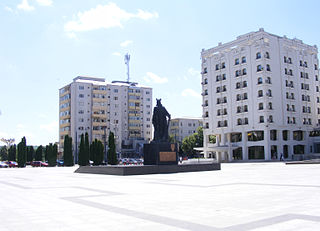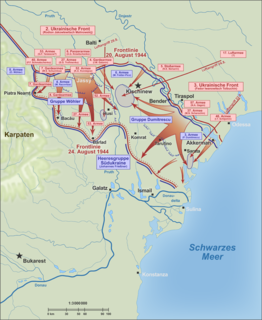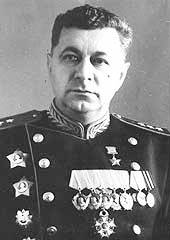See also
| | This disambiguation page lists articles associated with the title Jassy. If an internal link led you here, you may wish to change the link to point directly to the intended article. |
Jassy may refer to:
| | This disambiguation page lists articles associated with the title Jassy. If an internal link led you here, you may wish to change the link to point directly to the intended article. |

Chișinău, also known as Kishinev, is the capital and largest city of the Republic of Moldova. The city is Moldova's main industrial and commercial center, and is located in the middle of the country, on the river Bâc, a tributary of the Dniester. According to the results of the 2014 census, the city proper had a population of 532,513, while the population of the Municipality of Chișinău was 700,000. Chișinău is the most economically prosperous locality in Moldova and its largest transportation hub. Nearly a third of Moldova's population lives in the metro area.

Iași, also referred to as Jassy, is the second largest city in Romania, and the seat of Iași County. Located in the historical region of Moldavia, Iași has traditionally been one of the leading centres of Romanian social, cultural, academic and artistic life. The city was the capital of the Principality of Moldavia from 1564 to 1859, then of the United Principalities from 1859 to 1862, and the capital of Romania from 1916 to 1918.

Vaslui, a city in eastern Romania, is the seat of Vaslui County, in the historical region of Western Moldavia.

Bârlad is a city in Vaslui County, Romania. It lies on the banks of the Bârlad River, which waters the high plains of Western Moldavia.

The Treaty of Jassy, signed at Jassy (Iași) in Moldavia, was a pact between the Russian and Ottoman Empires ending the Russo-Turkish War of 1787–92 and confirming Russia's increasing dominance in the Black Sea.

Târgu Frumos, Romanian pronunciation: [ˌtɨrɡu fruˈmos]) is a town in Iași County, Western Moldavia, Romania. Eleven villages were administered by the town until 2004, when they were split off to form Balș, Costești and Ion Neculce communes.

The Second Jassy–Kishinev Operation, named after the two major cities, Iași ("Jassy") and Chișinău ("Kishinev"), in the staging area, was a Soviet offensive against Axis forces, which took place in Eastern Romania from 20 to 29 August 1944 during World War II. The 2nd and 3rd Ukrainian Fronts of the Red Army engaged Army Group South Ukraine, which consisted of combined German and Romanian formations, in an operation to reclaim the Moldavian SSR and destroy the Axis forces in the region, opening the way into Romania and the Balkans.

The Battle of Romania in World War II comprised several operations in or around Romania in 1944, as part of the Eastern Front, in which the Soviet Army defeated Axis forces in the area, Romania changed sides, and Soviet and Romanian forces drove the Germans back into Hungary.

The Uman–Botoșani Offensive or Uman-Botoshany Offensive was a part of the Dnieper–Carpathian Offensive, carried out by the Red Army in the western Ukrainian Soviet Socialist Republic against the German 8th Army of Army Group South during World War II. Led by Marshal of the Soviet Union Ivan Konev, it became one of the most successful Red Army operations of the whole war. In over a month of combat through the deep spring mud and numerous water barriers, the 2nd Ukrainian Front advanced over 300 kilometres (190 mi), cleared German forces from southwestern Ukraine, and entered Romania and Moldova.
The Battle of Târgu Frumos, also known as the Târgu Frumos Operation, occurred during 1944 in World War II in and around the town of Târgu Frumos in Iaşi County, Moldavia, Romania.

The First Jassy–Kishinev Offensive, named after the two major cities Iași (Jassy) and Chișinău (Kishinev) in the area, is the name used by David Glantz to refer to a series of military engagements between 8 April and 6 June 1944 by the Soviets and Axis powers of World War II. Richard C. Hall also refers to a First Jassy–Kishinev Operation which began on 5 April, without providing an exact date for its end. According to Glantz, the purported offensive was a coordinated invasion of Romania conducted by Red Army's 2nd and 3rd Ukrainian Fronts, in accordance with Joseph Stalin's strategy of projecting Soviet military power and political influence into the Balkans.
The 106th Infantry Division was a German division in World War II. It was formed on 22 November 1940 in Wahn.
The division was destroyed by the end of August 1944 during the Soviet Jassy–Kishinev Offensive.

Mikhail Konstantinovich Puteiko was a Belarusian Red Army major general killed in action during World War II.
Iași is a city in Moldavia, northeastern Romania.

Sergei G. Trofimenko was a Soviet military commander, active in the Russian Civil War and Second World War. His final rank was colonel-general. He had been promoted to major general 4 June 1940, lieutenant-general 13 June 1942, and colonel-general 13 September 1944.

The 384th Infantry Division was formed during the winter of 1941/42, as part of the 18th wave. All infantry divisions of this wave, numbers 383 to 389, were referred to as “Rhine Gold” divisions. The 384th was sent to the 3rd Panzer Corps, 1st Panzer Army, just in time to be involved in defensive fighting during the Soviet offensive in the Second Battle of Kharkov, early in the summer of 1942. Afterwards, the division took part in the offensive operations that led to Stalingrad. After the Soviet counteroffensive, Operation Uranus, most of the combat elements of the division were split between the 44th and the 376th Infantry Divisions, but both were surrounded at Stalingrad and destroyed.
The 295th Rifle Division was an infantry division of the Soviet Union's Red Army and later the Soviet Army, formed twice.

Eternity Memorial Complex is a memorial located in Chișinău, the capital of Moldova. The memorial is located along P. Halippa Street. It is dedicated to Soviet soldiers who died in the battles against the German-Romanian troops of the Second World War.

The Day of the Liberation of Moldova from Fascist Occupation is a public holiday celebrated annually in Moldova to commemorates the anniversary of the allied victory in the Second Jassy–Kishinev Offensive during World War Two. It is celebrated on 24 August and is also associated with the former Liberation from Fascist Occupation Day and the present day European Day of Remembrance for Victims of Stalinism and Nazism in Romania. It is used to commemorate Moldova's role in the defeat of from Nazi Germany in 1945. It is also recognized by the partially recognized Dniester Republic.
Jassy–Kishinev Offensive may refer to either of the following military offensives carried out by Soviet forces during World War II: